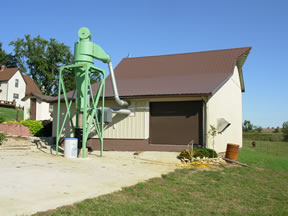Question
I am getting ready to move into my new 1000 sq ft shop. I run table saws, a 20" planer and 16" jointer, and a large drum sander. At any given time two machines may be running together. We have been using a Delta dust collection with bags and no separator. We would like to get the best, cleanest and healthiest system available.
What is the difference in canister filters and dust bags? It seems like a lot of dust goes thru the bags. Many of the dust collector manufacturers donít mention what size micron dust particles they catch. What size dust particles should I be trying to catch? Which is better - bag or canister? Do I need a cyclone?
Forum Responses
(Dust Collection and Safety Equipment Forum)
From contributor A:
My 2 hp. cyclone uses a 1 micron bag that is 7' long and about 30" in diameter. Initially it worked great, with no dust at all and lots of suction for 2 machines plus. After 6 months it started losing suction. The dust was caking onto the dust bag of course. I cleaned it and it worked great again for 6 months. Then I added a 2nd larger 1 micron bag just to see what would happen. The suction was amazing! The bags need cleaning less often. I have since added a 3rd slightly smaller DC 1 micron bag that I had from an older machine and I'm now satisfied with my system. The bags do not puff up as hard as with just the one bag originally but they allow more air to pass through easily and they filter better too. I have never used canisters and do not intend to try them. It seems to me they would pack up with dust easily, they are expensive, and I don't see them in production shops. I do see baghouses though. Check out some of the industrial cyclone makers websites like Kraemer.com, and call them for 1 micron bag prices. Don't use anything other than 1 micron bags for the sake of your health. Otherwise you will be pumping the most dangerous dust (the fine stuff) into your lungs and nasal passages. Wood dust is a carcinogen. Also, look into using a downdraft table.
Since you're operating up to two large capacity machines simultaneously, I'd suggest you consider at least a 5hp Industrial dust collector. Some considerations might be the Kraemer E-51; E-52; and E-53.
As for the Belfabs, you might want to take a look at the Belfab LW series. This is a modular design, which can be easily upgraded as you grow your shop. The LW's, start at 3hp/ 1400 cfm, and can be expanded to 20hp, and 6000 cfm. Belfab also offers the Hummer series dust collectors, which essentially are quieter than typical capacity dust collectors. They use 1800 rpm fans in those, and a very large range of performance levels.
